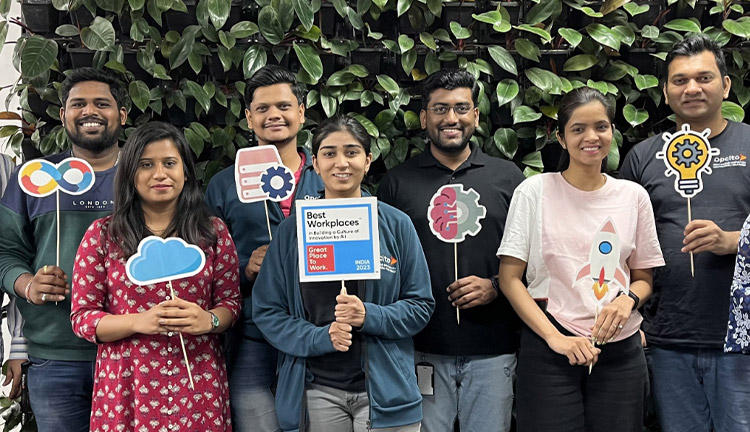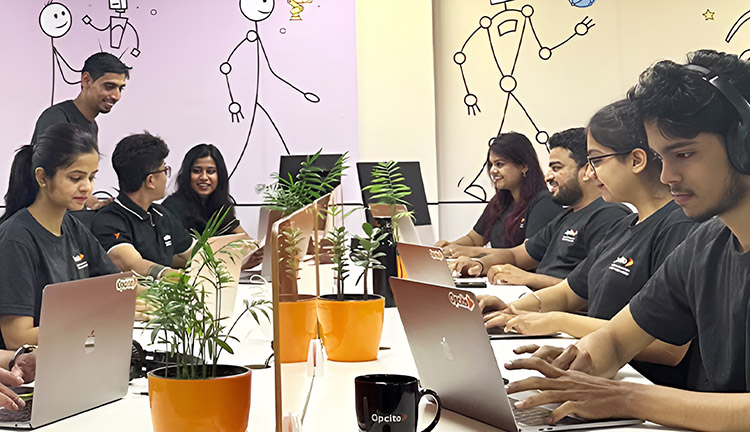Automation trends in software testing

Posted By
Vaishnavi Shinge

We are experiencing an increased wave of automation across various aspects of our work. This trend is particularly evident in development teams adopting Agile and DevSecOps practices. As a result, test automation has also become critical for those aiming to deliver high-quality software efficiently and rapidly. However, this shift is not only about the adoption of new automation tools. It is also evident in the disappearing boundary between software development and testing, showing how quality testing is now interconnected with the development process. Let's explore how automation is entering the testing scene and look at the key automation trends that are currently reshaping software testing.
What are the key trends revolutionizing test automation
As software testers, we're seeing a remarkable transformation in the testing landscape, which is rapidly evolving the way we deal with quality assurance. We're embracing new tools and methodologies that are altogether redefining our roles. I've seen firsthand how these trends enable our teams to deliver exceptional quality while keeping up with accelerated development cycles. Let's explore the innovations that are changing how we work.
Codeless test automation to break down technical barriers
One of the most significant developments in recent years has been the rise of codeless testing platforms. These tools democratize test automation by allowing quality assurance professionals without programming backgrounds to create complex test suites.
Platforms like Katalon Studio and Testim offer intuitive interfaces where testers can build automated tests by recording interactions, using drag-and-drop functionality, and utilizing visual editors. This approach offers several advantages:
- Reduced dependency on specialized automation engineers
- Faster test creation and deployment
- Broader participation in testing processes across teams
- Lower barriers to automation adoption
AI-driven automation
I spent hours updating test scripts whenever developers changed a button or field. Now, testing tools with AI capabilities handle those updates automatically. Our team uses these tools to spot patterns in test failures we'd miss when looking at individual results. They help focus on testing what matters instead of running everything every time.
I'm spending more time thinking about test strategy and less time fixing broken scripts. These AI capabilities are demonstrated in many ways:
- Automated test generation based on application analysis
- Self-healing tests that adapt to UI changes automatically
- Intelligent test selection that focus on high-priority cases
- Failure analysis that identifies patterns and root causes
Shift-left testing
Though relatively old, the "shift-left" testing approach is about getting quality assurance done earlier in development. Early testing helps teams spot and fix issues when it's easier and less costly. With faster release cycles becoming the norm, this method is more important than ever!
Practical applications of shift-left testing:
- Integration of testing within development environments
- Automated static code analysis during code writing
- Unit test automation as code is committed
- Early API testing before UI development completes
Continuous testing in DevOps
As DevOps practices become more common, continuous testing has become essential to today's delivery pipelines. Automated tests are now running at various stages—from code commit to deployment—giving developers quick feedback to help them improve their work.
A robust continuous testing approach typically includes:
- Automated unit tests on every code commit
- Integration tests during build processes
- Performance testing against established benchmarks
- Security scanning integrated into the pipeline
- UI automation for critical user journeys
Microservices and API testing automation
The growing popularity of microservices architecture has really highlighted the importance of API testing in automation. As applications transform into groups of independent services, making sure that these services communicate reliably is key to maintaining high system quality. Modern API testing automation focuses on:
- Validating contract compliance between services
- Ensuring correct data transformation and business logic
- Testing performance under various conditions
- Verifying security and authentication
What are the leading automation tools in today's testing landscape
The testing tool ecosystem is a continuous cycle where several platforms come into the picture with useful updates, gaining significant interest and adoption. Let's look at a few tools that caught my eye:
- Selenium is the most widely used framework for web automation testing because of its unmatched flexibility and strong community support.
- Cypress has also gained popularity for modern web applications because of its JavaScript-based approach and developer-friendly debugging features.
- Playwright is an emerging powerful alternative that offers reliable cross-browser automation with minimal configuration required.
- Appium leads the mobile testing automation landscape, supporting iOS and Android platforms with a unified API.
- TestComplete provides comprehensive automation across desktop, web, and mobile applications, featuring robust record-and-playback capabilities.
- Postman is quite literally the standard for API testing, combining an easy-to-use interface with powerful automation features.
- JMeter continues to excel in performance testing, enabling teams to simulate heavy loads and identify performance bottlenecks.
Now, choosing the right tool to suit your job depends purely on the application architecture, team expertise, and specific testing requirements. Every organization is unique, has unique needs, and runs different projects. I've been in projects where we've employed multiple tools rather than looking for a single solution for all testing needs, so it all comes down to the specific use case.
Real-world applications of modern test automation - Netflix
Netflix, with its streaming media quality assurance, is a classic example. It uses AI-driven automation to monitor its real-time application performance across thousands of devices. The system can automatically detect potential service disruptions and trigger the targeted test scenario to validate user experience proactively so that millions of subscribers are guaranteed a consistent viewing experience. Netflix combines real-time monitoring with automated testing to maintain exceptional service quality despite continuously deploying new content and additional features.
Looking for experts for your test automation journey?
Organizations embracing automated testing may encounter initial hiccups, such as upfront costs, script management challenges, and scaling concerns. However, the temporary challenges of automation are small compared to its significant benefits. Having the right expertise to help you with the implementation is essential.
At Opcito, we've helped countless organizations maximize the return on their automation investment. We have seen how using automation can greatly improve quality and speed up delivery times. Our specialists provide skilled technical support and clear strategies for every project. We ensure that your testing methods develop as your development needs change. Contact us today to connect with testing experts who can help you turn automation challenges into advantages in today's fast-paced development environment.
Related Blogs




















